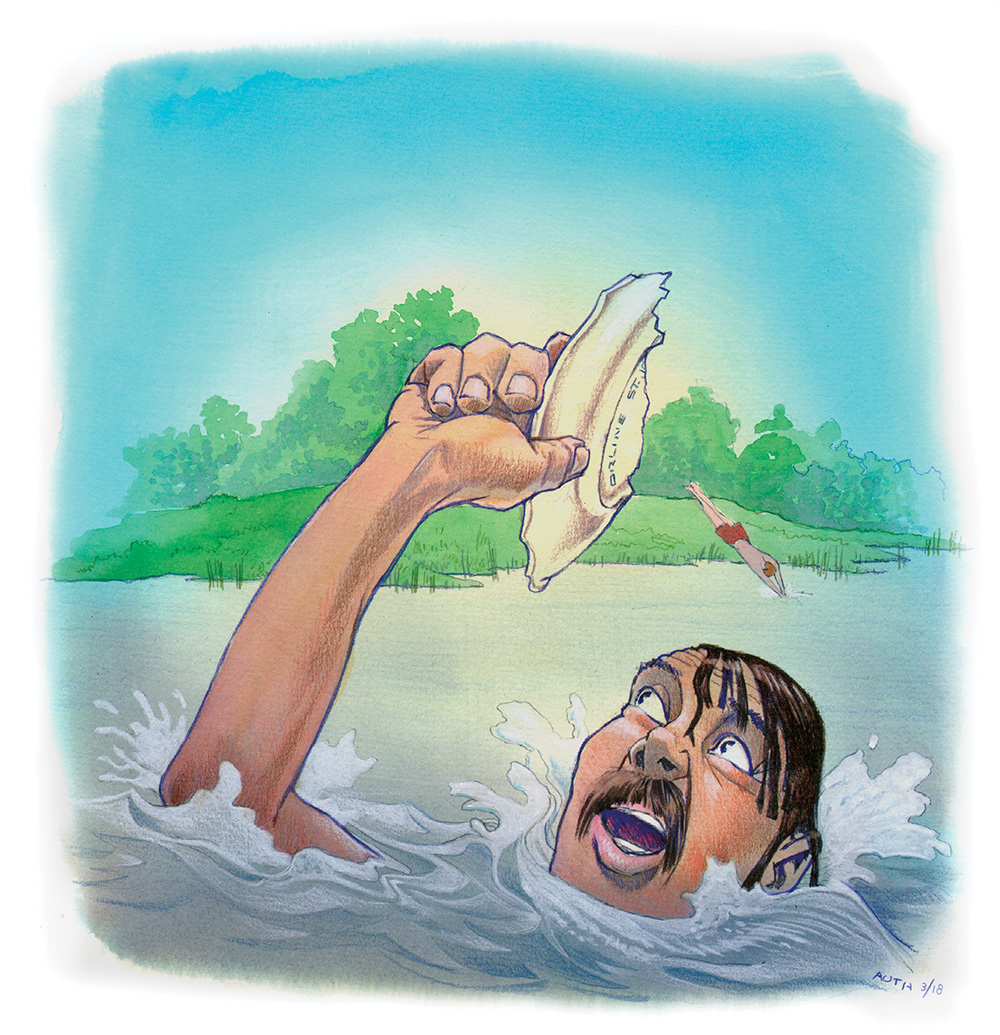William Harris was deadheading when he saw the hog chains.
That was what he told me back in 1991 when I interviewed him in his store at ‘Possum Bend, west of Camden and not far from the Alabama River.
“Deadheads” were sunken logs that had lain long in the water and had taken on the tea-color that was highly prized by furniture makers. “Hog chains” were the rods used to stabilize steamboats that once plied the waters. Moving closer, Harris could see the outline of the hull.
It was 1954.
Harris was a riverman. All his life he had heard stories of steamboat wrecks. Now he had found one.
Getting some friends to help him, they began free diving and soon their efforts brought results. Out of the mud and silt came twisted metal, nails, buttons, bits of copper and scraps of leather and cloth. Then one of them recovered a piece of broken dinnerware, with something written on it. As they washed away the muck, the bright blue words came clear: “Orline St. John Tim Meaher.”
The names recalled one of the era’s great steamboat captains, Tim Meaher, and one of the era’s great tragedies. In March of 1850, the steamboat Orline St. John caught fire and burned. Nearly 40 passengers and crew perished, including all the women and children on board.
With the wreck identified, Harris wanted to know more. So he began digging into old courthouse records and there he found mention of a strongbox and its treasure. The news could not be contained and soon the local press reported that “Wilcox Gold Hunters” were at work on the river. Fearing for the future of their find, Harris and his friends obtained salvage rights. Then they brought in a “centrifugal pump” to blow away the silt.
Up came an impressive array of artifacts – dishes, razors, knives, forks, needles, thimbles, buttons, shoes, blots of cloth, barrels, kegs, and thousands of nails. Once they found a box intact. On its way to the surface it broke apart and what they thought were coins spilled out – but they were only brass-collar buttons.
Also brought up were items that personalized the tragedy: “a miniature locket” with a “blue and pink enameled design” that was likely worn by one of the women, and a “dainty baby dress” that had survived the fire and almost a century under water, but fell to pieces when it dried.
They did not find any gold. There were lumps of coins which have been melted together by the intense heat, but there was no treasure.
Harris took what he found home and displayed it at his store. Meanwhile, in 1969, the U.S. Corps of Engineers built a dam at Miller’s Ferry, about 20 miles below the wreck. Soon the Orline St. John was under 40 feet of water.
But river rumors die hard and even today it is told around of how after the lake was full, divers went down, found the gold – bars about the size of “cakes of Octagon Soap” according to one report — and spirited it away.
Maybe they did.
Or maybe there was never any treasure.
Or maybe it is still there.
William Harris died in 2008 at the age of 98.
Harvey H. (Hardy) Jackson is Professor Emeritus at Jacksonville State University and a regular contributor to Alabama Living. He can be reached at hjackson@cableone.net.






